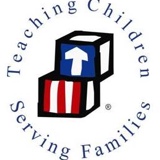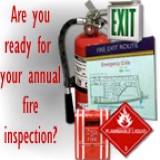Information
-
Document No.
-
Audit Title
-
Client / Site
-
Conducted on
-
Prepared by
-
Location
-
Personnel
Space and Furnishings
Indoor Space
-
Insufficient space for children, adult, and furnishings 1.1
-
Space lacks adequate lighting, ventilation, temperature control, or sound-absorbing materials. 1.2
-
Space in poor repair (EX. peeling paint on walls and ceiling; rough, damaged floors) 1.3
-
Space poorly maintained(floors left sticky or dirty; trash cans overflowing) 1.4
-
Sufficient indoor space for children, adults, and furnishings ( enough space to function adequately) 3.1
-
Adequate lighting, ventilation temperature control and sound absorbing materials .3.2
-
Space in Good repair 3.3
-
Space reasonably clean and well maintained 3.4
-
Space is accessible to all children and adults currently using the classroom (Ex. ramps and handrails for people with disabilities access for wheelchairs and walkers) 3.5
-
Ample indoor space that allows children and adults to move around freely (EX. furnishings do not limit children's movement; sufficient space for equipment needed by children with disabilities) 5.1
-
Good ventilation some natural lighting through window or skylight. 5.2
-
Space is accessible to children and adults with disabilities. 5.3
-
Natural light can be controlled (EX. adjustable blinds or curtains) 7.1
-
Ventilation can be controlled (EX. windows can open; ventilating fans used by staff) 7.2
Furniture for routine care, play, and learning
-
Insufficient basic furniture for routine care, play, and learning (EX. not enough chairs for all the children to iuse at the same time; very few open shelves for toys) 1.1
-
Furniture is generally in such poor repair that children could be injured (EX. splinters or exposed nails, wobbly legs on chairs) 1.2
-
Sufficient furniture for routine care, play and learning 3.1
-
Most furniture is sturdy and in good repair 3.2
-
Children with disabilities have the adaptive furniture they need (Ex. adaptive chairs or bolsters are available for children with physical disabilities) 3.3
-
Most furniture is child sized 5.1
-
All furniture is sturdy and in good repair 5.2
-
Adaptive furniture permits inclusion of children with disabilities with peers ( EX. child using special chair can sit at table with others) 5.3
-
Routine care furniture is convenient to use ( Ex. cots/mats stored for easy access) 7.1
-
Woodwork bench ,sand/water table or easel used. 7.2
-
Comments:
Furnishings for relaxation and confort
-
No soft furnishings accessible to children (EX. upholstered furniture cushions, rugs, bean bag bag chair) 1.1
-
No soft toys accessible to children (Ex. stuffed animals, soft dolls) 1.2
-
Some soft furnishings accessible to children (EX. carpeted play space, cushions) 3.1
-
Some soft toys accessible to children 3.2
-
Cozy area accessible to children for a substantial portion of the day 5.1
-
Cozy area is not used for active physical play 5.2
-
Most soft furnishings are clean and in good repair. 5.3
-
Soft furnishings in addition to cozy area accessible to children (Ex. cushions in dramatic play area, several rug areas or wall- to - wall carpeting) 7.1
-
Many Clean, soft toys accessible to children. 7.2
-
Comments:
Room Arrangement for Play
-
No interest centers defined. 1.1
-
Visual supervision of play area is difficult. 1.2
-
At least two interest centers defined. 3.1
-
Visual supervision of play area is not difficult. 3.2
-
Sufficient space for several activities to go on at once ( EX. floor space for blocks, table space for blocks, table space for manipulatives, easel for art) 3.3
-
Most spaces for play accessible to children with disabilities enrolled in the group. 3.4
-
At least three interest centers defined and conveniently equipped ( EX. water provided near art area; shelving adequate for blocks and manipulatives) 5.1
-
Quiet and active centers placed to not interfere with one another (Ex. reading or listening area separated from blocks or housekeeping) 5.2
-
Space is arranged so most activities are not interrupted (EX. shelves placed so children walk around, not through, activities , placemet of furniture discourages rough play or running.) 5.3
-
At least five different interest centers provide a variety of learning experience. 7.1
-
Centers are organized for independent use by children (EX. labeled open shelves ; labeled containers for toys; open shelves are not overcrowded; play space near toy storage) 7.2
-
Additional materials available to add to or change centers. 7.3
-
Comments:
Space for Privacy
-
Children are not allowed to play alone or with a friend, protected from intrusion by other children. 1.1
-
Children are allowed to find or create space for privacy (EX. behind furniture or room dividers, indoor play equipment, in a quiet corner of the room) 3.1
-
Space for privacy can be easily supervised by staff. 3.2 <br>** (all spaces used must be easily supervised by staff)
-
Space set aside for one or two children to play, protected from intrusion by others (EX. no -interruption rule; small space protected by shelves) 5.1 <br> **(Staff must enforce the protection rule, if needed in order to be given credit)
-
Space for privacy accessible for use for a substantial portion of the day. 5.2<br>**(This indicator only applies to the space set aside for privacy in 5.1. If credit is not given for 5.1 hen credit cannot be given for 5.2
-
More than one space available for privacy. 7.1
-
Staff set up activities for one or two children to use in private space away from general group activities ( EX. two pegboards at a small table in a quiet corner; computer for one or two children to use). 7.2<br><br>** Staff refers to regular teaching staff in the room, specialists who come into the room do not count for this indicator.
-
Comments:
Child-related Display
-
No materials displayed for children. 1.1
-
Inappropriate materials for predominant age group. (EX. materials in preschool classroom designed for older school-age children or adults; pictures showing violence) 1.2<br>** Materials must be meaningful to the children to be considered appropriate. Score yes if over 50% of the display in the room is inappropriate for over 50%of the children or if any of the displayed materials show violence or indicate prejudice.
-
Appropriate materials for predominant age group (EX. photos of children; nursery rhymes beginning reading and math for older preschoolers and kindergartners; seasonal displays) 3.1<br>** Appropriate means suitable for the developmental level of the age group and the abilities of the children.
-
Some Children work displayed. 3.2
-
Much of the display area relates closely to current activities and children in group. (EX. artwork or photos about recent activities) 5.1
-
Most of the displayed is work done by cildren. 5.2 <br>( 50/50 give credit if most done by children)
-
Many items displayed on child's eye level. 5.3
-
Individualized children's work predominates. 7.1<br>** Score yes if more than 50% of children's displayed is individualized. Indiv. means work done by child in his or her creative way.
-
Three-dimensional child created work (Ex. playdough, clay, carpentry) displayed as well as flat work. 7.2<br>** 3 dimensional work must have height, width, and depth. children must be able to build up and out as they make junk, styrofoam or wood sculptures or use clay or play-dough (not using cookie cutters ) Gluing things on flat surface (as gluing materials scraps or styrofoam peanuts to flat surface is not 3 -D.<br>
-
Comments:
Space for Gross Motor Play
-
No outdoor or indoor space used for gross motor/physical play. 1.1
-
Gross Motor space is very dangerous ( EX. access requires long walk on busy street, same space used for play and parking lot, unfenced area for Pre-K) 1.3
-
Some space outdoors or indoors used for gross motor/physical play. 3.1
-
Gross motor space is generally safe. ( EX. sufficient cushioning under climbing equipment fenced in outdoors area.) 3.2
-
Adequate space outdoors and some indoors. 5.1
-
Space is easily accessible for children in groups (EX. on same level and near classroom; no barriers for children with disabilities) 5.2
-
Space is organized so that different types of activities do not interfere with one another (EX. play with wheel toys separated from climbing equipment and ball play) 5.3
-
Outdoor gross motor space has a variety of surfaces permitting different types of play (EX. sand, black top, wood chips; grass) 7.1
-
Outdoor area has some protection from the elements (EX. shade in summer, sun in winter, wind break, good drainage) 7.2
-
Space has convenient features (EX. close to toilets and drinking water, accessible storage for equipment; class has directs access to outdoors) 7.3
-
Comments:











